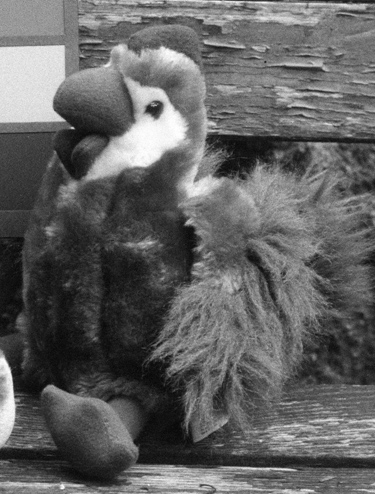Oops! An Unscheduled Experiment Leads to "TLF-Ortho, v. 2"
January 29, 2012From: "Modern Photographic Processing, Vol. 1", by Grant Haist, 1979.
"Formation of the Silver Halide Crystals (Nucleation and Initial Growth)
The silver halide crystals are formed by mixing a soluble silver salt, usually silver nitrate, with a soluble halide salt or salts in a water solution containing gelatin. In this step, called emulsification, the sodium, potassium, or ammonium salts of any of the three halogens may be used as the halide salt. In the single-jet method of preparation, a silver nitrate solution is run, at a carefully-controlled rate, from a jet into an agitated solution containing the halide salt and the gelatin. The double-jet method adds the solution of silver nitrate from one jet and the equivalent solution of the halide salt from another jet into a stirred gelatin solution. However, many, many procedural variations exist in this first step of emulsion making. One method of importance involves adding the entire halide solution quickly to the silver nitrate." pp 61-62.(Italics added by me.)
*************************************
Dr. Haist's books are excellent, but still, that last sentence is about all the information there is. The reader is left to divine from the text exactly why adding the salts to the silver is a "method of importance." I had not actually planned on playing with that puzzle very soon (if ever). Although "double-jet" precipitation was coming up soon on my schedule, I don't even know if the halide-into-the-silver method has an official name— but that's now been added to my notebook of questions waiting for answers to stumble over as I read/wade through the emulsion-related literature of the last 130 years.
The answer got an oops-boost this week. I was planning on making an identical batch of TLF#2-Ortho, but my brain was elsewhere and I forgot to add the salts solution to the gelatin before precipitation. I ran in half the silver nitrate and watched for the emulsification to happen (my favorite part of the whole process—never get tired of it) but nothing happened. It wasn't until then that I realized my mistake. I decided to play through instead of ditching things right there. I poured in the salts solution and finished the recipe as usual—with two tweaks. Instead of adding the second half of the silver at 45 minutes, I added half of the remaining half (a quarter of the original volume) right after I added the plain gelatin at 30 minutes in. I ripened without stirring 15 minutes, then added the last of the silver nitrate, plus 10 drops 10% KBr, and finished out the hour total ripening. The washing and digestion steps were the same.
Suffice to say, I am thrilled with the results. I didn't get the batch cut up and loaded until late yesterday afternoon, so I was only able to expose a few sheets, and those in the last of the day's light. Today, it's raining sideways.
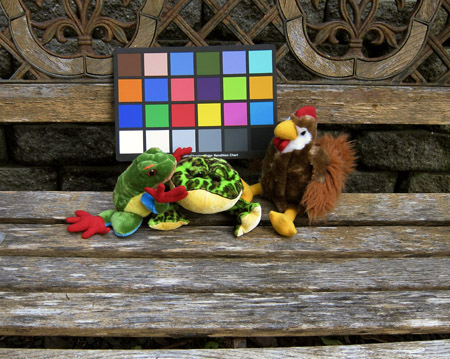
But, here's what I know so far:
1) It has fine grain.
2) It's crystal clean (very low baseline density).
3) It's quite a bit more contrasty than TLF#2-Ortho, v. 1.
4) I think it's slower. I'm can't be sure because the lighting test was so off from my usual protocol.
As expected, the emulsions, exposed without a yellow filter, behaved like colorblind.
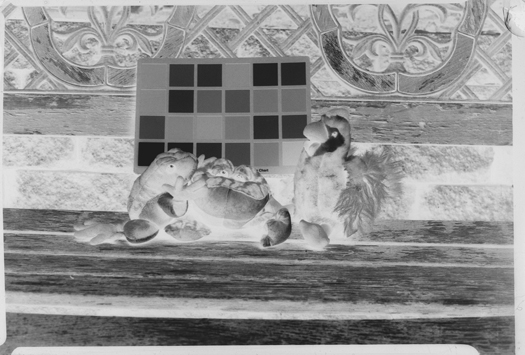
Left: "TLF#2-Ortho, v. 2". Below: "TLF#2-Ortho, v. 1",
no filters
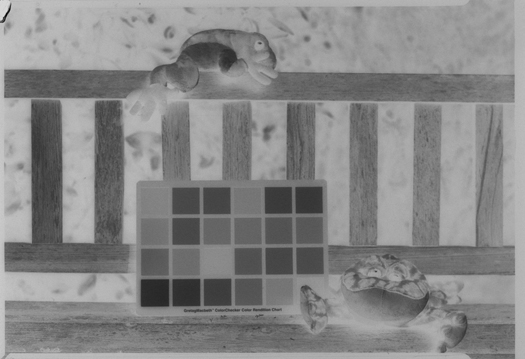
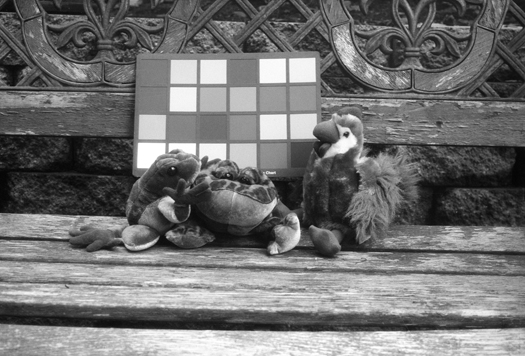
and: invert, crop, and "auto-levels"
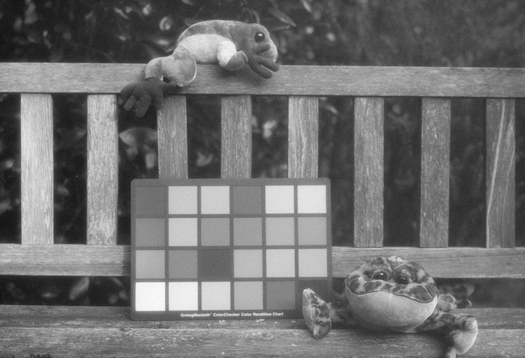
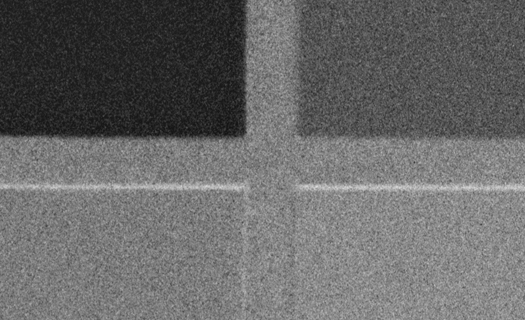
The same crop areas from the negatives, "actual Pixels" magnification
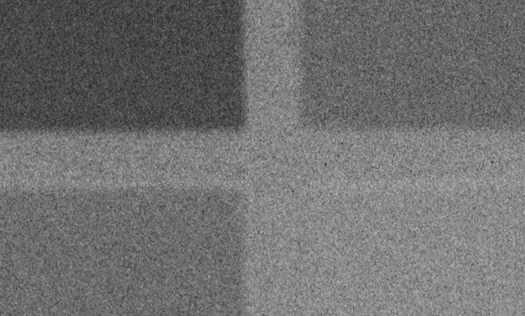
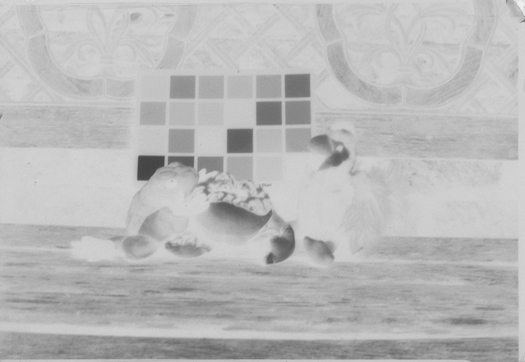
Of course, the emulsion was sensitized to be ortho, and although the negative is horribly underexposed, the color response is almost identical to "v. 1". I used an old, commercial K2 (medium yellow) filter. It's why the image is so much softer than the unfiltered negatives.
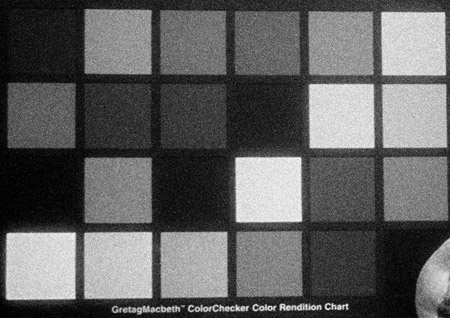
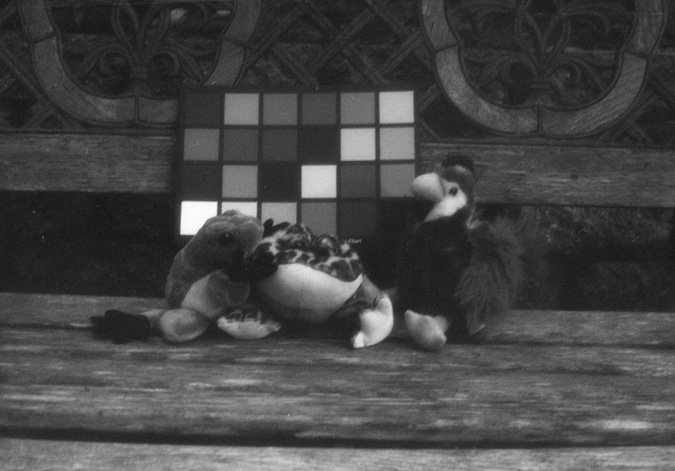
Above: A chart from "Ortho-v. 1", for comparison with "Ortho-v. 2"
The reason this is exciting is because it opens up options for emulsion combining for the purpose of characteristic curve sculpting. The emulsions are identical in every way except for precipitation characteristics, and so, should combine without mishap. At least that's a working theory...
It may also turn out to be a lovely stand-alone emulsion—either filtered for ortho, or as colorblind.

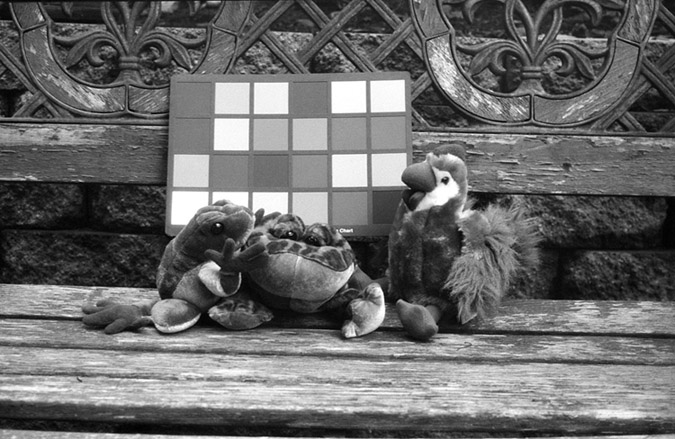
redux: "v. 2", no filter, f/11, 3 seconds
